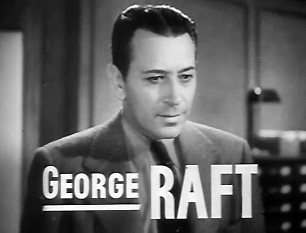
George Raft was an American film actor and dancer identified with portrayals of gangsters in crime melodramas of the 1930s and 1940s. A stylish leading man in dozens of movies, Raft is remembered for his gangster roles in Quick Millions (1931) with Spencer Tracy, Scarface (1932) with Paul Muni, Each Dawn I Die (1939) with James Cagney, Invisible Stripes (1939) with Humphrey Bogart, and Billy Wilder's comedy Some Like It Hot (1959) with Marilyn Monroe and Jack Lemmon; and as a dancer in Bolero (1934) with Carole Lombard and a truck driver in They Drive by Night (1940) with Ann Sheridan, Ida Lupino and Bogart.
Joseph M. Newman was an American film director most famous for his 1955 film This Island Earth. His credits include episodes of The Twilight Zone and The Alfred Hitchcock Hour.

Jon Hall was an American film actor known for playing a variety of adventurous roles, as in 1937's The Hurricane, and later when contracted to Universal Pictures, including Invisible Agent and The Invisible Man's Revenge and six films he made with Maria Montez. He was also known to 1950s fans as the creator and star of the Ramar of the Jungle television series which ran from 1952 to 1954. Hall directed and starred in two 1960s sci-fi films in his later years, The Beach Girls and the Monster (1965) and The Navy vs. the Night Monsters (1966).

William John Eythe was an American actor of film, radio, television and stage.

Howard Green Duff was an American actor.

Nina Foch was an American actress who later became a drama instructor. Her career spanned 6 decades, consisting of over 50 feature films and over 100 television credits. She was the recipient of numerous accolades, including an Academy Award nomination for Best Supporting Actress, and a National Board of Review Award for Best Supporting Actress. Foch established herself as a dramatic actress in the late 1940s, often playing cool, aloof sophisticates.

Jeff Richards was an American minor league baseball player with the Portland Beavers, who later became an actor. He was sometimes credited as Dick Taylor and Richard Taylor.

Johnny O'Clock is a 1947 American film noir crime film directed by Robert Rossen and starring Dick Powell, Evelyn Keyes, Lee J. Cobb and Ellen Drew. It was distributed by Columbia Pictures.

Red Light is a 1949 American film noir crime film starring George Raft and Virginia Mayo, and directed and produced by Roy Del Ruth. Based on the story "This Guy Gideon" by Don "Red" Barry, it features strong religious overtones.

Helena Carter was an American film actress in the 1940s and 1950s who is best known for her work in the film Invaders from Mars as Dr. Patricia Blake. From 1947 to 1953 she would appear in 13 films, during which time she also worked as a model.
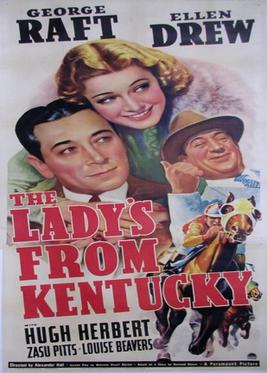
The Lady's from Kentucky is a 1939 film directed by Alexander Hall and starring George Raft and Ellen Drew. It was written by Malcolm Stuart Boylan from a story by Rowland Brown. The screenplay involves a failing bookie (Raft) who becomes half owner of a racehorse, with a Kentucky lady (Drew) owning the other half. ZaSu Pitts plays a supporting role.

Rumba is a 1935 American musical drama film starring George Raft as a Cuban dancer and Carole Lombard as a Manhattan socialite. The movie was directed by Marion Gering and is considered an unsuccessful follow-up to Raft and Lombard's smash hit Bolero the previous year.

A Dangerous Profession is a 1949 American film noir directed by Ted Tetzlaff, written by Warren Duff and Martin Rackin, and starring George Raft, Ella Raines and Pat O'Brien. The film was one of a series of thrillers in which Raft appeared in the late 1940s, with decreasing commercial results.
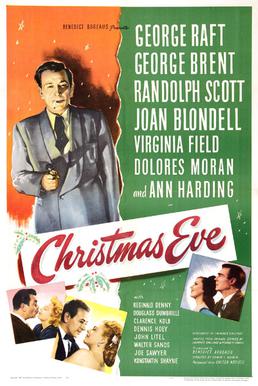
Christmas Eve is a 1947 American portmanteau comedy drama film directed by Edwin L. Marin and starring George Raft, George Brent and Randolph Scott. It is based on a story by Laurence Stallings and Richard H. Landau. An independent production by Benedict Bogeaus it was distributed by United Artists. It was re-released under the alternative title Sinner's Holiday. It was one of several films Raft made with Edwin Marin and Benedict Bogeaus.
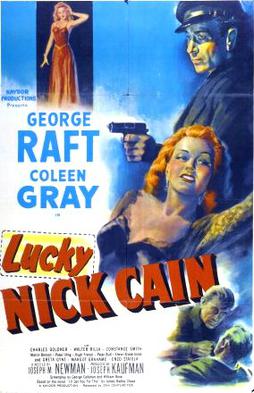
I'll Get You for This is a 1951 British thriller film by Joseph M. Newman starring George Raft, Coleen Gray, and Enzo Staiola. It was made from an adaptation by George Callahan and William Rose of James Hadley Chase's 1946 book of the same name. The setting was shifted from Las Vegas in the novel to an Italian gambling resort.

Intrigue is a 1947 American film noir crime film directed by Edwin L. Marin and starring George Raft, June Havoc and Helena Carter. Intrigue was intended to be the first of a number of films Raft made, with producer Sam Bischoff, for his own production company, Star Films. It was one of several movies Raft made with Marin.

Loan Shark is a 1952 American crime film noir directed by Seymour Friedman and starring George Raft, Dorothy Hart and Paul Stewart.
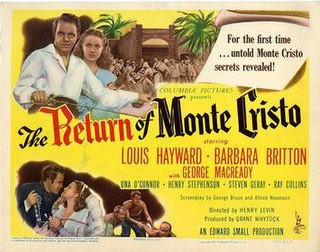
The Return of Monte Cristo is a 1946 American historical adventure film directed by Henry Levin and starring Louis Hayward, Barbara Britton and George Macready. It was produced by Edward Small for distribution by Columbia Pictures. A swashbuckler, it is a sequel to The Count of Monte Cristo (1934) and The Son of Monte Cristo (1940).

Davy Crockett, Indian Scout is a 1950 American Western film directed by Lew Landers and starring George Montgomery and Ellen Drew. Wartime hero Johnny McKee had a small role in the film, as did Jim Thorpe. The film was shot at the Motion Picture Centre, with filming commencing June 1948. Much of the footage was taken from the 1940 film Kit Carson, starring Jon Hall, Dana Andrews, and Clayton Moore.
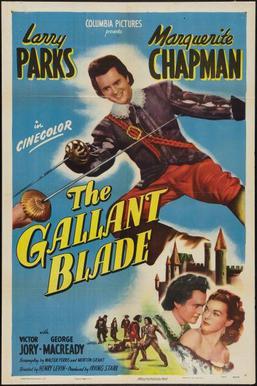
The Gallant Blade is a 1948 American Cinecolor adventure film directed by Henry Levin and starring Larry Parks.



















